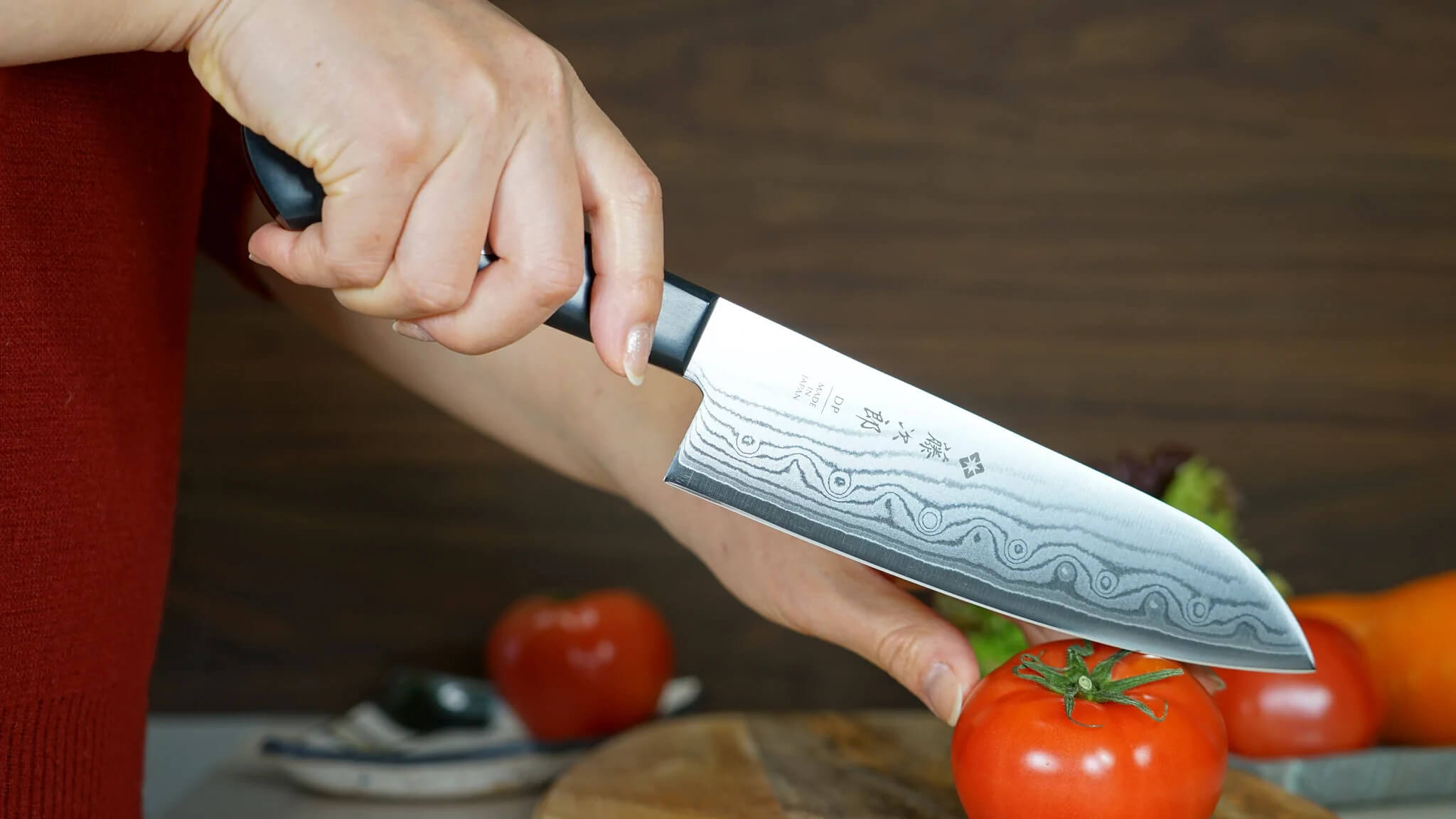A good quality knife is an essential tool in your kitchen. So, it is ideal to invest in an all-purpose knife like the Japanese Santoku knife for chopping vegetables and other foods, making them an essential part of any culinary arsenal. A good Santoku will make food prep a breeze because they save time without sacrificing quality. The best chefs know that kitchen knives are like any other tool: the right one can make all the difference between mediocre and excellent results.
So, go through the following section to learn more about this kind of knife and make the right purchase decision.
Lightweight
Santokus are also lighter, thinner, and easier to use for cutting vegetables than Western style knives. The lower blade angle makes it possible to cut through hard or soft food items easily and precisely. The thin blade allows you to slice through the food without crushing it.
You must choose a Santoku knife with a well-balanced weight so that there is not much strain on your wrist when chopping vegetables or meat.
Material
The blades of Santoku knives are usually crafted from high-carbon steel, stainless steel, or a combination of both. High-carbon steel is better for cutting meat because it holds an edge well and has excellent durability and strength. However, this makes it more difficult to sharpen than stainless steel. Stainless steel does not hold an edge as well as high carbon but is easier to sharpen due to its softer nature.
Western-influenced or traditional Santoku
Choosing between a Western-influenced Santoku versus a traditional Japanese Santoku knife boils down to personal preference.
A Western-influenced knife will have a rounded edge, while the traditional version has a straighter edge. This difference can affect how you cut vegetables such as onions and tomatoes—for example if you prefer your onions cut in half, then the Western-influenced knife would be ideal for this task.
A Santoku knife is easier to use when preparing food with delicate ingredients, such as fish or chicken breasts which require precision slicing techniques. They are also ideal for cutting small items like garlic cloves or ginger root but do not have quite as much heft when chopping large pieces of meat or vegetables.
Single-bevel or double-bevel
A single-bevel knife is only sharpened on one side, whereas double-bevel knives are sharpened on both sides of the blade. These knives are sharper than double-bevel knives and are easier to sharpen. The cutting edge of a single-bevel knife is stronger than that of a double-bevel knife and will thus hold its edge longer.
Double-bevel knives are more versatile because they can cut in both directions when used for things like chopping vegetables, meats, and fish. In contrast, single-bevels have limited directionality with their edges as they can only cut upwards. This means that if you need to chop through something thick like thick potatoes or steak, you should use a double-bevel blade because it’s more likely that your task would require going through something thick rather than thin slices of soft fruit or vegetables, which would not require much force.
There are many things to consider when purchasing a Santoku. The first and most important consideration is the type of steel from which the blade is made. You should also look at the blade type. Finally, consider how steeply angled your knife’s spine is—this will indicate how well-suited it may be for chopping harder foods like nuts or meats.

